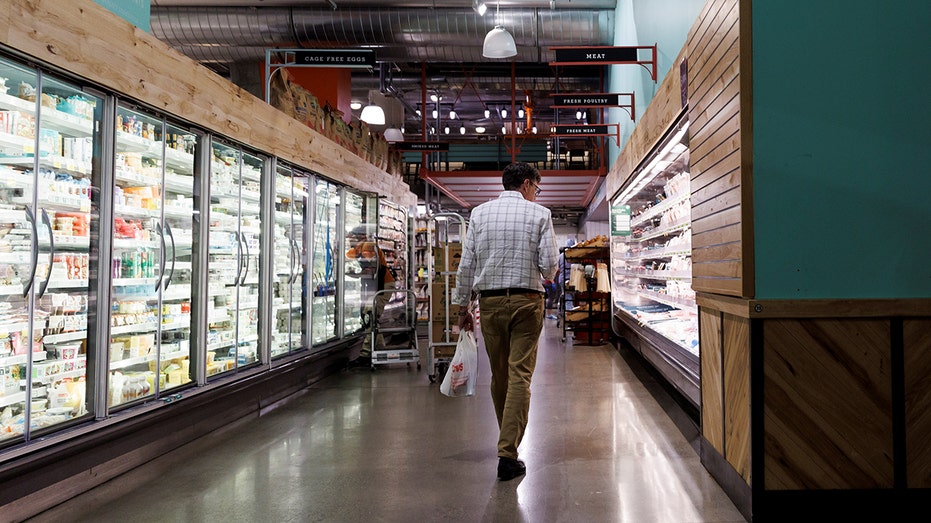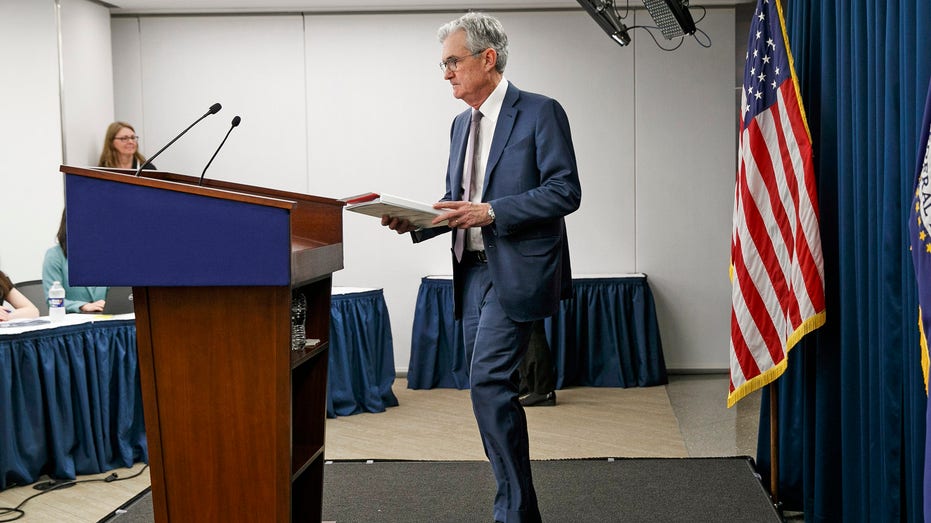U.S. Bank Wealth Management global investment strategist Tom Hainlin analyzes the utilities sector and reveals what he’s avoiding on “The Claman Countdown.”
The rapid pace of inflation likely cooled off slightly in July as gasoline prices fell and supply chain disruptions started to ease. However, that may provide little comfort to millions of Americans continuing to confront elevated costs for everyday goods.
The Labor Department is releasing the highly anticipated consumer price index report on Friday morning, providing a fresh look at just how hot inflation ran in July.
Economists expect the gauge, which measures a basket of goods, including gasoline, health care, groceries and rent, to show that prices surged 8.7% in July from the previous year — down significantly from the 40-year high of 9.1% notched in June. On a monthly basis, inflation is projected to have increased 0.2%, a marked decline from the 1.3% recorded the previous month.
“I’m going to say this — but I understand economists have said this for every month for about the past 12 or 14 months — we’re kind of thinking we’re peak year-on-year rates of inflation now, and those should be coming down,” Bank of America’s chief U.S. economist Michael Gapen told FOX Business during a media roundtable on Tuesday.
Still, the report is expected to show underlying momentum in inflation: core prices, which exclude the more volatile measurements of food and energy, are expected to climb 6.1% annually, snapping a three-month streak of slowing growth and marking the fastest pace since April. On a monthly basis, prices likely climbed 0.2%, driven by prices in areas like housing and rent.
INFLATION REDUCTION ACT: WHAT TAX HIKES ARE IN THE BILL?

A customer shops at a supermarket in Washington, D.C., on July 13, 2022. U.S. consumer inflation in June surged 9.1 percent from a year ago, hitting a fresh four-decade high, according to the U.S. Labor Department. (Ting Shen/Xinhua via Getty Images / Getty Images)
“While we still expect inflation to decelerate going forward, some components will remain stubbornly high and complicate the outlook,” said Luke Tilley, the chief economist at Wilmington Trust. “GDP data shows two quarters of decline, but job growth, consumer spending and capex (capital expenditure) continue to expand. The risk of U.S. recession is high, and even higher for Europe.”
Fueling the price spikes are several issues related to the COVID-19 pandemic and the rousing economic rebound from the worst downturn in nearly a century. In the wake of lockdown orders that saw a broad swath of the country shuttered, the economy staged a stunning comeback, powered by unprecedented government spending, emergency steps by the Fed, and the widespread distribution of vaccines.
As Americans — flush with stimulus cash — ventured out to shop, eat and travel, businesses struggled to meet the demand, reporting difficulties in onboarding new employees and buying enough supplies to satisfy the need. Many businesses, in order to attract new talent, hiked wages — but to offset those increases, employers have reported raising the prices of their products.
The matter was complicated by bottlenecks at ports and freight yards and a lack of shipping containers, snarling the global supply chain.
IS THE UNITED STATES ENTERING A RECESSION?

Blueberries and cherries for sale at a farmers market in the Fort Greene neighborhood of Brooklyn, New York, on July 16, 2022. (Allison Hess/Bloomberg via Getty Images / Getty Images)
Since early spring, however, the Russian war in Ukraine has further exacerbated the inflation crisis by elevating food and energy prices. Oil and gasoline prices have declined sharply since June, although economists have cautioned the situation remains uncertain due to the ongoing conflict in Europe.
“Energy prices have started to come down,” Gapen said. “The open question is what happens kind of by the end of the year as Europe starts to wean itself off of imports of Russian oil and what happens with the supply of [liquefied natural gas]? Do we get another adverse shock in energy prices? I don’t know.”
The report will also have significant implications for the Federal Reserve, which is tightening monetary policy at the fastest rate in decades as it tries to cool consumer demand and reduce out-of-control inflation. Policymakers approved back-to-back 75-basis point rate hikes in June and July for the first time since 1994 and have confirmed that a similarly sized increase is on the table.
If the data comes in hotter than expected, it could raise the odds of an even steeper rate hike in September and a more aggressive central bank in September.

Federal Reserve Chair Jerome Powell attends a news conference, March 3, 2020, to discuss an announcement from the Federal Open Market Committee in Washington. (AP Photo/Jacquelyn Martin / AP Newsroom)
The Fed is also watching other economic indicators, including job growth and consumer inflation expectations. In a potentially reassuring sign, a New York Fed survey published on Monday shows that Americans’ expectations of where inflation will be one year later fell sharply in July.
CLICK HERE TO READ MORE ON FOX BUSINESS
But a surprisingly strong July jobs report, which showed the economy gained 528,000 jobs last month, nearly double the expectation, could prove worrisome to the Fed as it tries to cool the labor market.


